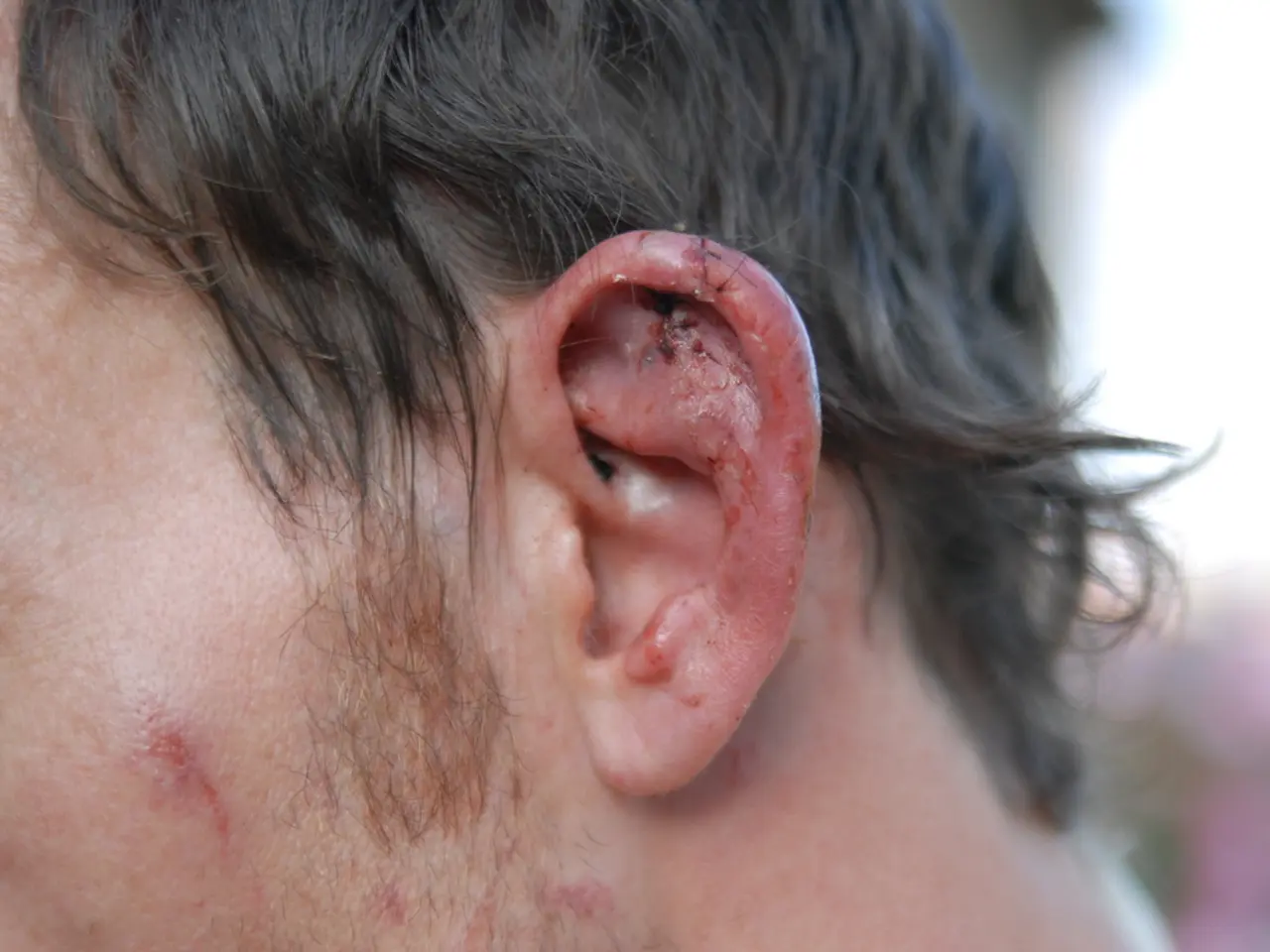Beta Thalassemia with Sickle Cell Disease: Origins, Signs, and Remedies
Sickle cell beta-thalassemia, a genetic condition affecting hemoglobin production, is a type of sickle cell disease that occurs when an individual inherits a sickle cell trait and a beta-thalassemia trait from their parents. This condition can lead to a range of symptoms, including mild to severe anemia, tiredness, weakness, pain, and possible organ damage.
Fortunately, various treatment options are available to manage the symptoms and prevent complications. These treatment modalities are often individualized based on disease severity, transfusion dependency, and patient age.
One common treatment is blood transfusions, which help manage anemia and reduce complications, especially in severe cases or transfusion-dependent patients. Another treatment option is hydroxyurea, a medication that induces the production of fetal hemoglobin (HbF), which does not sickle and can reduce disease severity and transfusion needs.
Folic acid supplementation is also routinely given to support red blood cell production in thalassemia and sickle cell patients, particularly during stress periods. In some cases, splenectomy may be indicated to manage complications like hypersplenism, massive splenomegaly, or severe anemia, although it is used cautiously due to the infection risk.
Stem cell transplantation, specifically allogeneic bone marrow or hematopoietic stem cell transplantation, can offer a potential cure by replacing defective hematopoietic cells. This treatment can help reactivate fetal hemoglobin production or remove the sickle cell mutation, showing promising results in clinical trials for both sickle cell disease and transfusion-dependent beta thalassemia.
Emerging treatments like BEAM-101 and Casgevy (CRISPR-Cas9 based) modify patients’ own hematopoietic stem cells to reactivate fetal hemoglobin production or remove the sickle cell mutation, showing promising results in clinical trials. These one-time treatments can reduce or eliminate disease symptoms but are costly and under clinical evaluation.
It is important to note that the donor blood used in stem cell transplantation must have matching antigens to avoid immune system rejection and potential health problems. Additionally, people taking hydroxyurea have fewer periods of acute chest syndrome, blood transfusions, and hospital stays.
For those experiencing frequent periods of pain, hydroxyurea may be a treatment option as it makes red blood cells bigger and changes their shape to prevent complications. If an individual is aware of a family history of sickle cell disease, they may wish to consider undergoing genetic screening before attempting to have children.
In conclusion, treatment for sickle cell beta-thalassemia aims to prevent complications and manage symptoms through continuous care. This can involve a combination of supportive therapies like blood transfusions and hydroxyurea, as well as novel curative approaches under investigation such as gene editing therapies.
- Sickle cell beta-thalassemia, a genetic disorder impacting hemoglobin production, can lead to various symptoms like anemia, tiredness, weakness, pain, and possible organ damage.
- Treatment for this chronic disease includes blood transfusions, hydroxyurea, folic acid supplementation, splenectomy, stem cell transplantation, and emerging therapies like BEAM-101 and Casgevy.
- Hydroxyurea, a medication boosting fetal hemoglobin production, can minimize disease severity, reduce transfusion dependency, and lessen periods of acute chest syndrome.
- Stem cell transplantation, replacing defective hematopoietic cells with healthy ones, is a potential cure for sickle cell beta-thalassemia and has shown promising results in clinical trials.
- In preventive health and wellness, individuals aware of a family history of sickle cell disease may consider undergoing genetic screening prior to having children.
- Diet, fitness, exercise, and skin care are essential aspects of overall health and wellness but may not directly impact the management of chronic kidney disease or other chronic diseases like sickle cell beta-thalassemia.




